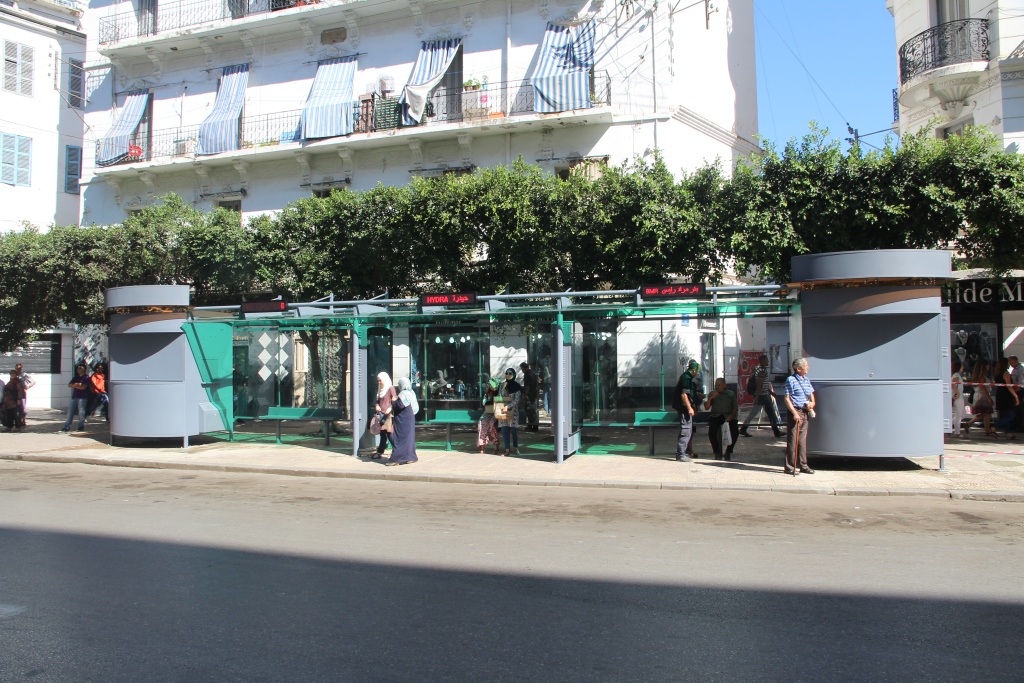As cities worldwide embrace digital transformation, smart bus shelters are emerging as critical infrastructure for efficient, sustainable, and user-friendly public transportation. Integrating IoT, renewable energy, and data analytics, these shelters address urban challenges like climate resilience, passenger comfort, and transit efficiency. This article explores cutting-edge technologies, global case studies, and the transformative impact of smart bus shelters on modern cities.
Core Features of Next-Gen Smart Bus Shelters
1. Real-Time Transit Intelligence
Modern shelters feature digital displays showing live bus arrival times, route changes, and service alerts. Advanced systems like Mumbai’s solar-powered E Ink screens reduce energy use by 40% while providing glare-free updates.
2. Multifunctional Passenger Amenities
Device Charging & Wi-Fi: Dubai’s shelters offer free Wi-Fi and USB ports, while Shenzhen’s 2024 standards mandate charging stations and wireless connectivity.
Retail Integration: Automated kiosks in Taipei sell snacks and beverages, and India’s SuperUs Systems enable bill payments and ticket purchases.
3. Climate-Adaptive Design
Solar Energy: Solar panels power lighting and devices, as seen in Shenzhen’s shelters and France’s Escale Numérique with 100% renewable operation.
Extreme Weather Resilience: Hurricane-resistant steel frames (tested for 150mph winds) protect shelters in coastal cities.
4. Sustainability & Smart City Integration
Eco-Friendly Materials
Recycled steel, tempered glass, and FSC-certified wood reduce carbon footprints by 30%. Shenzhen’s 2024 guidelines require 85% recyclable components.

5. AI-Driven Efficiency
Passenger Analytics: Cameras and sensors monitor foot traffic to optimize bus schedules.
Environmental Monitoring: Air quality sensors (e.g., in Guangzhou’s shelters) alert cities to pollution spikes.
6. Revenue Generation
Advertising-ready panels and retail partnerships help municipalities fund maintenance. For example, African solar shelters generate $15k/year via ads.
7. Mandatory features include:
AI Video Analytics: Detects crowds, smoking, and illegal parking.
Edge Computing: Local data processing reduces cloud dependency.
India’s Cost-Effective Solar Solutions
SuperUs Systems’ wireless shelters use E Ink displays, cutting installation costs by 60%.
8. Future Trends in Smart Bus Shelter Design
Autonomous Vehicle Synergy
Modular designs (e.g., Maven Move) will integrate with self-driving shuttles for seamless transfers.
9. Hyper-Personalization
Voice assistants and AR navigation (piloted in Shanghai) will tailor routes to individual needs.
Projects like Envi’s compost-producing shelters aim for 100% circular material use by 2030.
Smart bus shelters are no longer mere waiting areas—they’re dynamic hubs bridging sustainability, technology, and urban livability. From Mumbai’s energy-efficient displays to Shenzhen’s AI-powered analytics, these innovations redefine public transit for the 21st century. Municipalities and suppliers investing in smart shelters today will lead the race toward greener, smarter cities tomorrow.








 Share to:
Share to: